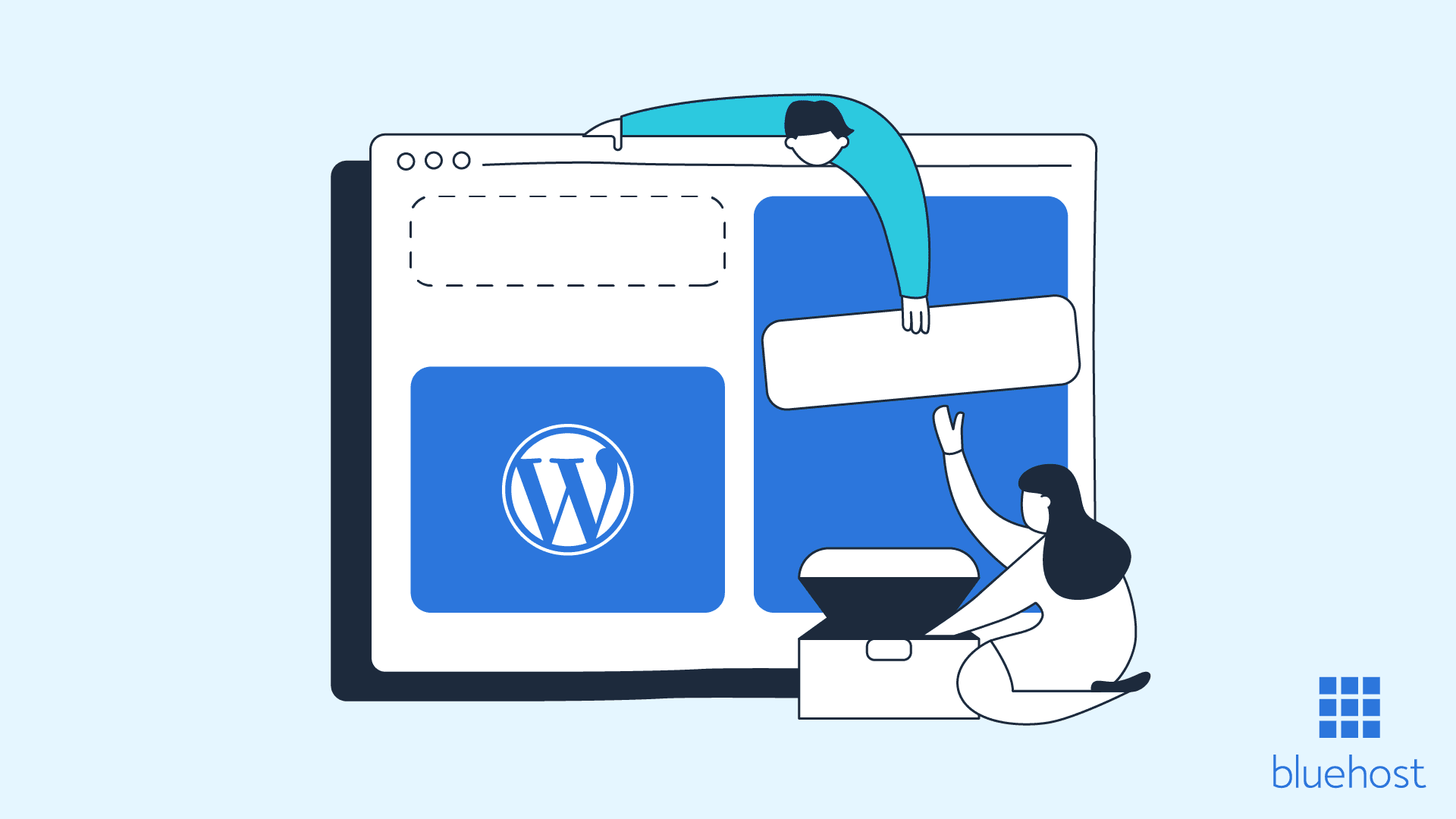WordPress – The Basics
There are two ways to create your website using WordPress viz. WordPress.com and WordPress.org. For the uninitiated, WordPress.com is a platform that helps you get started in the online world without the hassle of purchasing a customised domain name. It is ideal for users who want to create beginner websites or blogs without investing much. However, if you want to build a website for your business or other professional reasons, a self-hosted website or blog is a better option in spite of it being costlier compared to the former. WordPress.org is the self-hosted option for building a website. If you decide to create your website using the self-hosted option i.e wordpress.org then you would need to purchase a domain name, as well as, web hosting. Bluehost’s WordPress Hosting is recommended when building a WordPress website. In fact, one of the advantages of choosing WordPress Hosting from Bluehost is that you get a free domain name for a year and WordPress is automatically installed without you having to install it manually. Post registering your website domain name and hosting, you will get access to the WordPress backend using which you can create your first blog/website. Let us move on to understanding the WordPress backend.WordPress Backend – Dashboard
After you’ve logged in to your WordPress account using your username and password, you will be taken to the WordPress dashboard. Below is how your WordPress dashboard aka WordPress backend will look like. Note: The front-end is your website. Your WordPress dashboard is divided into two sections – LHS (Left-hand side) and RHS (right-hand side). Depending on the functionality you choose on the LHS sidebar, the RHS changes.
Currently, as displayed in the image above, the RHS gives an overview of your WordPress viz. Activity (Recent posts or website pages you’ve published), WordPress News, WordPress Version, official WordPress article links to get you started, and other overall stats.
To learn WordPress to create your own website, you need to understand what each heading on the LHS sidebar stands for. Let’s understand them in detail.
1. Posts – to publish blog posts on your website, you need to create (add) a post, categories and add tags.
To add a new post, click on ‘Add New’ and a new page opens as represented in the image below. Add the title and content and publish the post.
Your WordPress dashboard is divided into two sections – LHS (Left-hand side) and RHS (right-hand side). Depending on the functionality you choose on the LHS sidebar, the RHS changes.
Currently, as displayed in the image above, the RHS gives an overview of your WordPress viz. Activity (Recent posts or website pages you’ve published), WordPress News, WordPress Version, official WordPress article links to get you started, and other overall stats.
To learn WordPress to create your own website, you need to understand what each heading on the LHS sidebar stands for. Let’s understand them in detail.
1. Posts – to publish blog posts on your website, you need to create (add) a post, categories and add tags.
To add a new post, click on ‘Add New’ and a new page opens as represented in the image below. Add the title and content and publish the post.



 6. Plugins – Plugins can help add functionalities to your website easily without the hassle of coding. Some of the popular plugins are SEO plugins, social share plugins, image compressors, monitoring spam comments, and so on.
Click on the ‘Plugins’ tab to check the ‘Installed’ plugins, ‘Add New’ plugins or edit plugins manually using ‘Plugins Editor’.
7. Users – If you are running a business website you can have multiple users who can access the backend. Depending on the role a user is assigned, they can have permission to either edit the website settings or just post. You can assign one role out of the five available roles to a user – Subscriber, Contributor, Author, Editor and Administrator. The subscriber has the least rights while the administrator has complete control.
8. Tools – This section enables you to check your website’s health, erase or export personal data, as well as, import and export data.
9. Settings – All the settings for your WordPress website can be viewed here viz. Privacy, Permalinks, Media, Discussions, etc.
Although at the start learning WordPress might seem like a daunting task, however, it isn’t. All you need to do is follow the steps, experiment and you’ll be able to design your website in no time. We hope this WordPress tutorial for beginners helped you understand the basics of WordPress. So, what are you waiting for? Get set, go and create your own WordPress website today.
For more information, head to the Web Hosting Tutorials page and browse through a large repository of helpful resources and blogs.
6. Plugins – Plugins can help add functionalities to your website easily without the hassle of coding. Some of the popular plugins are SEO plugins, social share plugins, image compressors, monitoring spam comments, and so on.
Click on the ‘Plugins’ tab to check the ‘Installed’ plugins, ‘Add New’ plugins or edit plugins manually using ‘Plugins Editor’.
7. Users – If you are running a business website you can have multiple users who can access the backend. Depending on the role a user is assigned, they can have permission to either edit the website settings or just post. You can assign one role out of the five available roles to a user – Subscriber, Contributor, Author, Editor and Administrator. The subscriber has the least rights while the administrator has complete control.
8. Tools – This section enables you to check your website’s health, erase or export personal data, as well as, import and export data.
9. Settings – All the settings for your WordPress website can be viewed here viz. Privacy, Permalinks, Media, Discussions, etc.
Although at the start learning WordPress might seem like a daunting task, however, it isn’t. All you need to do is follow the steps, experiment and you’ll be able to design your website in no time. We hope this WordPress tutorial for beginners helped you understand the basics of WordPress. So, what are you waiting for? Get set, go and create your own WordPress website today.
For more information, head to the Web Hosting Tutorials page and browse through a large repository of helpful resources and blogs. 


Write A Comment